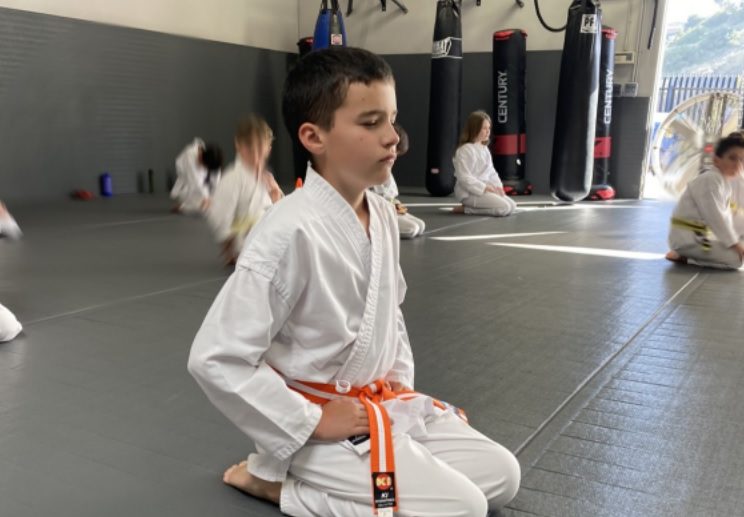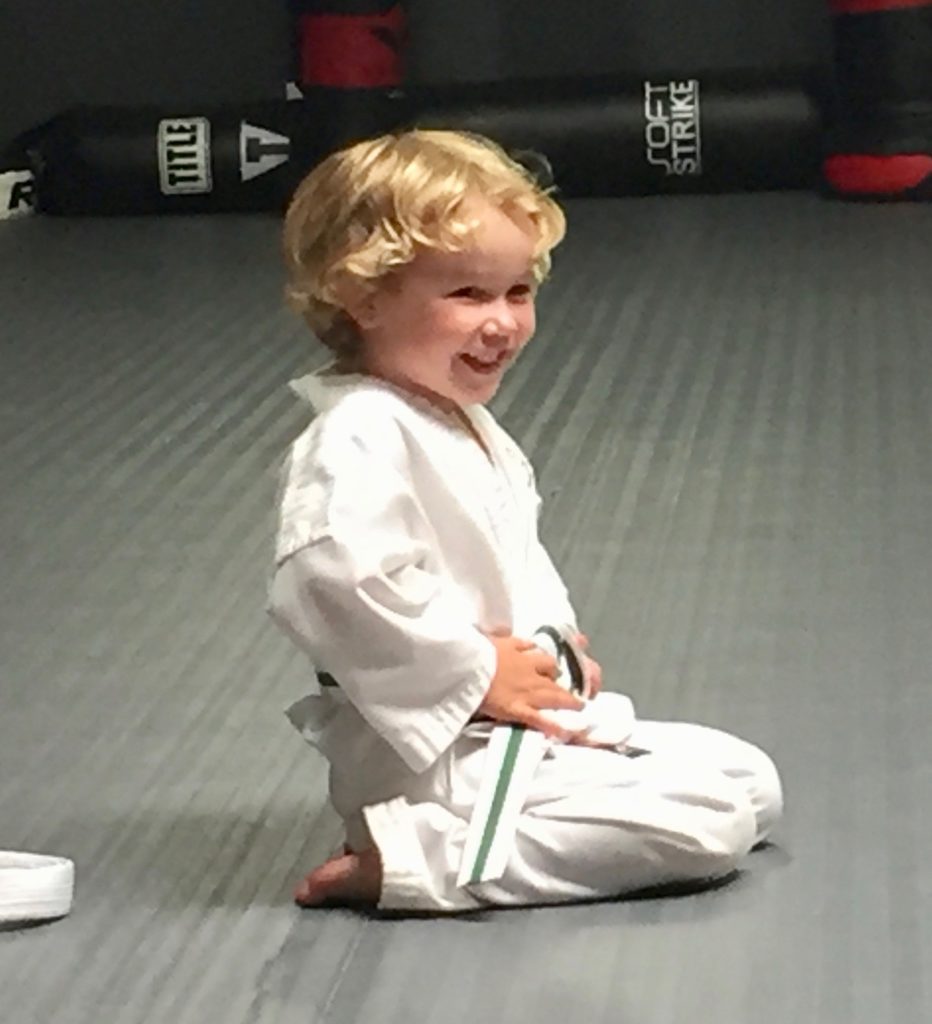
Seiza is a formal sitting position with the legs folded underneath the body, the tops of the feet on the floor, and the buttocks resting on the heels. In Japanese culture Seiza is the most respectful way to sit. Therefore most Japanese arts, including flower arrangement, tea ceremony and karate, require students to sit in seiza.
Seiza helps improve ankle flexibility, circulation in the legs and posture. Due to the position of the pelvis in seiza, maintaining correct posture is much easier than sitting cross-legged, facilitating better breathing during meditation. Seiza is also more practical for martial arts from a safety standpoint. There is a lot of movement in different directions during a martial arts class. By sitting compactly in seiza, a seated student is much less likely to trip other students moving around. However, the benefits stated above are not the reason students are required to sit in seiza at Practical Karate.
Seiza Teaches Two Valuable Lessons
Seiza is highly uncomfortable for most beginners in martial arts, and this is the very reason we require students to sit in seiza. Getting used to the pain of seiza teaches two valuable lessons for martial arts and life. Learning to deal with discomfort is an essential part of martial arts training. In modern society, many people go to great lengths to avoid discomfort. However, the martial artist learns to embrace discomfort by understanding three essential concepts about coping with physical discomfort and pain. First, the pain is only temporary. The training will eventually end, and you will be able to rest and become comfortable again. Second, to truly find comfort, you must first be uncomfortable. If you lay around all day long, it becomes difficult to get comfortable, even on a nice couch. However, that same couch feels like a cloud of comfort and joy after a hard workout.
Third, and most importantly, the martial artist learns to find comfort even in uncomfortable places. From difficult training, the martial artist learns to accept discomfort, sometimes even physical pain, and keep going without watching the clock and waiting for class to finish. There is something deeply satisfying about suffering through a hard training session without fading or giving up. Rickson Gracie famously said that in Brazilian Jiu-Jitsu, “You have to find comfort in uncomfortable situations.” This statement is not only true for martial arts but especially for life.
Learning Why to Sit in Seiza
When I first started karate sitting in seiza during meditation was incredibly hard and felt almost unbearable. Yet, I didn’t move because everyone else in the class sat perfectly still without moving until told to stand up. Little by little, seiza became easier and easier until there was no discomfort at all. Eventually, seiza became my preferred style of sitting while eating in Japan. Becoming accustomed to the position until it becomes comfortable leads to the next lesson learned from sitting in seiza.
In Latin, the phrase “Vires acquirit eundo” (We gather strength as we go) describes a concept essential for anyone embarking on the martial arts journey. Becoming proficient in martial arts requires a large amount of patience and dedication. Nobody steps into a dojo for the first time and displays impressive skills and abilities. Someone jogging for the first time can’t begin to imagine completing an ultra-marathon. Working up to completing a 100-mile race is a gradual process that requires time, dedication, perseverance, and most importantly, an acceptance of pain. The same is true for martial arts and, for that matter, anything else worthwhile in life. Beginning white belts can’t imagine keeping up with the intensity and pace of a black belt class. However, with time, patience, dedication and an acceptance of discomfort, those same white belts gradually “gather strength as they go” and turn into the black belts pushing the pace.
